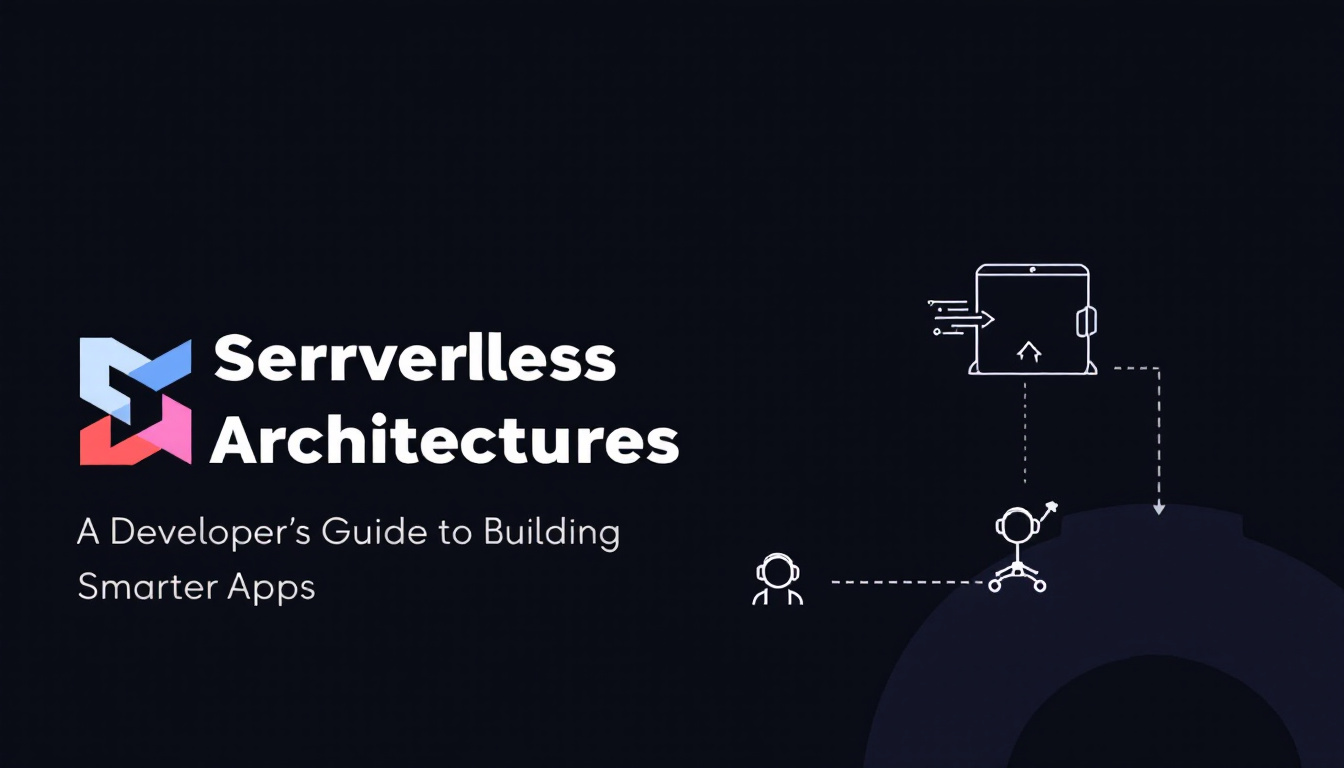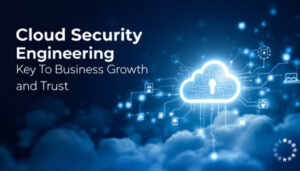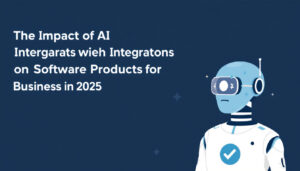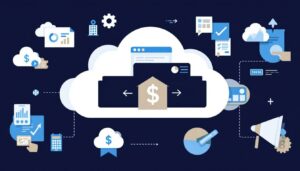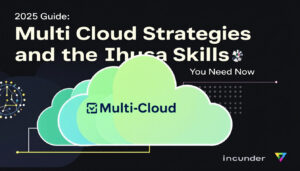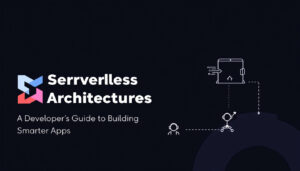Serverless architecture is shaping a new standard for software delivery in 2025. Its rise marks a major shift in how IT teams and developers approach infrastructure, automation, and cost control. The appeal lies in simplifying development, speeding release cycles, and supporting scalable business solutions. “Serverless Architectures 2025: A Developer’s Guide to Building Smarter Apps”
Organizations now look to serverless methods to help drive digital transformation and handle unpredictable workloads with less overhead. As more projects rely on these models, developers must understand how serverless affects coding practices, operations, and long-term planning. Staying informed on trends such as Digital Product Trends 2025 provides critical insight as this technology becomes standard across industries.
Core Principles of Serverless Architectures in 2025
Serverless architectures continue to transform IT operations in 2025, shifting responsibility for infrastructure to cloud providers. This approach enables organizations to focus on building business logic rather than managing servers. Compared to traditional cloud infrastructure, serverless computing eliminates the need to provision, scale, or maintain resources manually. The architecture relies on a combination of Function-as-a-Service (FaaS), Backend-as-a-Service (BaaS), event-driven triggers, and automated scaling. Each foundational principle helps organizations streamline workflows, improve efficiency, and lower costs.
Function-as-a-Service (FaaS) and Modern Workflows
Function-as-a-Service (FaaS) is at the heart of serverless solutions. With FaaS, developers deploy discrete functions, which are small units of code triggered by events or HTTP requests. The runtime environment is fully managed, meaning the provider handles operating system patching, scaling, and fault tolerance.
Key aspects of FaaS include:
- Ephemeral Execution: Functions run only when needed, reducing idle times and optimizing resource utilization.
- Automatic Scaling: The platform scales each function independently, handling traffic spikes with minimal latency.
- Flexible Runtimes: Developers can select from multiple languages and environments, enhancing productivity and allowing rapid integration with other services.
Modern workflows leverage FaaS for batch data processing, webhooks, chatbots, API backends, and microservices. For further insights on the evolution of serverless beyond FaaS, see Serverless Computing in 2025: Beyond Functions-as-a-Service.
This separation of workload into individual functions accelerates software development cycles and enables rapid experimentation.
Event-Driven Environments and Automation
Event-driven architecture fundamentally changes how applications react to real-world activity, both internal and external. In this model, services listen for and respond to events such as file uploads, database updates, or external API calls.
Benefits of event-driven models include:
- Granular Automation: Systems automate complex workflows based on precise triggers, eliminating manual intervention.
- Loose Coupling: Components communicate through events, which enables independent deployment and updating.
- Scalable Operations: Applications react to demand instantly, with each event processed as it occurs.
These advantages lead to smarter cloud automation, supporting business goals and improved productivity. See detailed strategies in Cloud Automation Strategies for 2025.
For more information on the structure and advantages of this approach, consult Event-Driven Architecture.
Benefits: Scalability, Speed, and Cost Efficiency
Serverless architectures offer distinct benefits compared to traditional infrastructure:
- Scalability: Serverless solutions handle demand fluctuations automatically. Whether running one task or thousands, resources scale instantly.
- Faster Development: Teams iterate quickly by focusing on business logic, no longer slowed by infrastructure setup or maintenance.
- Cost Efficiency: Organizations pay only for actual compute time, with no charges for idle resources. This pay-per-use model helps control spending.
Operational overhead is greatly reduced. Developers no longer contend with patching or resource allocation, which streamlines team responsibilities. These efficiencies make serverless an effective fit for dynamic business environments where agility and sustained cost savings matter.
Explore additional benefits in The Benefits of Serverless Computing Architecture.
For SaaS providers and startups, see why serverless SaaS development is gaining traction in 2025, with proven advantages for both IT and business stakeholders.
Key Trends Shaping Serverless Architectures for Developers and Businesses
Serverless architecture is rapidly adjusting to growing enterprise demands as 2025 approaches. Developers and IT leaders are adopting serverless not just for its efficiency, but because it connects so smoothly with cloud-native tools, upholds stricter security standards, and enhances cross-platform operations. These shifts impact how organizations plan, build, and maintain digital products at scale.
Deeper Integration with Cloud-Native Services
 Photo by Following NYC
Photo by Following NYC
A major trend for serverless in 2025 is its broader integration with cloud-native ecosystems. Modern serverless platforms now blend closely with managed databases, analytics engines, message queues, and monitoring suites. This approach lets teams assemble solutions faster, matching the key themes seen in Digital Product Trends 2025.
Current serverless environments are designed to:
- Auto-scale with microservices: Each service instance adds or removes resources automatically according to real-time usage.
- Connect with containerized workloads: Serverless and containers now work in parallel, providing flexibility for both stateless and stateful components.
- Leverage native DevOps: Teams benefit from built-in CI/CD pipelines, automated deployment, and logging without custom integrations.
New capabilities have emerged, such as event-driven communication across cloud and edge locations and support for AI or ML operations on demand. To see how these capabilities are evolving, visit Serverless Computing: Revolutionizing Cloud-Native Development in 2025 and review insights on trends shaping cloud-native stacks.
For additional context on this digital shift, the post Serverless Architecture in 2025: The Evolution of Cloud-Native outlines enhanced AI integration and multi-cloud orchestration as standard features for the next wave of serverless adoption.
Evolving Security and Compliance Landscape
Security priorities for serverless are clear: protect workloads, uphold privacy, and meet regulatory standards. As adoption grows, organizations face greater scrutiny from regulators and business partners, demanding robust safeguards across each component.
2025 requirements encompass:
- Zero trust protocols: Every function call, API request, and data transfer must be authenticated and monitored.
- Encryption by default: Sensitive data is encrypted in transit and at rest, including temporary storage between compute steps.
- Automated compliance checks: Serverless providers offer real-time checks for standards like GDPR, HIPAA, and PCI DSS.
For developers, practical steps include using the principle of least privilege when managing IAM roles, setting secure network boundaries, and scanning dependencies for vulnerabilities. Adopt platform-level tools for configuration drift detection and automate incident response using managed services. The article Cloud-Based Digital Product Security 2025 gives a comprehensive overview for IT teams modernizing their security strategies.
More specialized advice on the risks and mitigation practices appears in Serverless Security Pitfalls: A 2025 Checklist, which covers real-world scenarios and platform best practices. For those handling regulated workloads, review How Serverless Architecture Evolved IT Security 2025 to understand compliance concerns unique to serverless models.
Cross-Platform Compatibility and Developer Experience
Modern organizations support a broad set of platforms—mobile, web, IoT, and desktop—which pushes serverless developers to adopt systems that work everywhere. As product complexity rises, unified testing, deployment, and monitoring become necessary to avoid fragmented user experiences.
These needs shape today’s priorities:
- Unified APIs: Teams expose services with consistent protocols and data models across platforms.
- Framework flexibility: Developers select from tools that provide broad compatibility, such as supporting both AWS Lambda and Google Cloud Functions with minimal changes.
- Integrated monitoring: A single interface for tracing, analytics, and debugging across environments keeps troubleshooting efficient.
Ensuring robust cross-platform support is essential for competitive digital products. Developers seeking deeper technical advice can explore Cross-Platform Compatibility Features, which lists practical features and considerations for modern serverless solutions.
For a comparison of top serverless tools and their cross-platform applications, Top 5 Serverless Platforms for Web Developers in 2025 ranks popular choices and details features like broad integration and developer usability. Insights into the future direction of frameworks and platform-agnostic approaches are also discussed at The Future of Cross-Platform Development in 2025.
Serverless technology, once seen only as a backend upgrade, is now shaping the expectations for products and services that must perform reliably across every channel and device.
Practical Applications and Real-World Use Cases of Serverless in 2025
The adoption of serverless architecture has reached a new level of maturity in 2025. Businesses use serverless not just for automation but also to increase speed, scale services, and streamline operations. The advantages are clear: faster releases, easier scaling, and less management worry. Real-world solutions across several industries showcase how serverless technology has reshaped modern IT.
Building Scalable Business Solutions with Serverless
Many organizations now use serverless to deliver flexible and scalable business applications. By abstracting away infrastructure management, they focus resources on core features and business outcomes. This shift supports teams of all sizes—from startups to large enterprises—in deploying resilient backends and dynamic APIs.
Common use cases include:
- E-commerce platforms scaling to handle promotional surges without pre-planning capacity.
- Media streaming services that adjust compute resources automatically as viewers spike during live events.
- IoT data pipelines processing millions of device signals with near-zero latency or downtime.
Startups and independent developers benefit from these efficiencies as well. They use free or low-cost hosting solutions that make it easy to prototype, test, and scale without heavy investment. For an in-depth look at options, see the detailed comparison at Best Free Backend Hosting for Developers 2025.
Serverless technology is now standard for building apps that require rapid adaptation, continuous delivery, and precise cost control as demand shifts.
Accelerating Deployment and Reducing Time-to-Market
Speed of deployment is one of the strongest reasons development teams choose serverless in 2025. Serverless removes much of the overhead related to provisioning, patching, and updating infrastructure. As a result, developers spend more time writing code and less time managing runtime environments.
Key methods for reducing time-to-market:
- CI/CD pipelines automatically test, build, and deploy code with each update.
- Provisioned concurrency ensures functions are always warm, reducing cold start delays for user-facing applications.
- Template-driven deployment allows teams to spin up new environments in minutes using scripts and declarative infrastructure tools.
Many product teams report shipping new features weekly instead of monthly, leading to higher user engagement and improved business agility. Rapid launch is especially valuable for industries reacting to seasonal demand, regulatory update deadlines, or emerging market needs. The speed and flexibility of serverless deployment aligns with broader digital product trends, helping IT teams keep pace in competitive sectors.
Best Practices: Monitoring, Cost Management, and Governance
Growing serverless deployments highlight the need for visibility, control, and efficient use of resources. The shift from static servers to event-driven compute requires new habits for monitoring, budget oversight, and policy enforcement.
Actionable best practices:
- Resource and performance monitoring: Use built-in dashboards to track execution time, memory consumption, and error rates. Set custom alerts for unusual usage spikes or latency problems.
- Cost management: Regularly review billing reports and optimize function configurations—such as memory and timeout settings—to fit actual usage patterns.
- Governance and access control: Define access roles with principle of least privilege, audit API usage, and automate policy checks to meet industry compliance standards.
Several modern serverless platforms include integrated solutions for these needs, making them suitable for both regulated environments and fast-growing startups. Advanced governance tools let teams adapt quickly while meeting security and budget goals. For deeper strategies on secure digital product delivery, refer to Cloud-Based Digital Product Security 2025.
In summary, real-world adoption of serverless technology in 2025 supports faster delivery cycles, cost-effective scaling, and strong governance—delivering clear business value across industries.
Preparing for the Future: Skills, Tools, and Career Opportunities in Serverless
Serverless architecture has become a common foundation for modern solutions in IT, electronics, and digital business. As adoption grows, requirements for developer skills and tools change. Keeping pace with technical standards and business needs ensures relevance in a dynamic market. The following sections outline the current expectations and highlight new opportunities for growth in the serverless era.
Essential Skills for Serverless Developers in 2025
 Photo by ThisIsEngineering
Photo by ThisIsEngineering
Success in serverless development depends on technical and operational ability. The required skills include more than proficiency with code. Developers must also manage process automation, security, and collaboration in distributed systems.
The following areas matter most for those working with serverless in 2025:
- Serverless framework knowledge: Familiarity with tools such as AWS Lambda, Azure Functions, and Google Cloud Functions is standard. Teams also rely on orchestration frameworks like the Serverless Framework and SAM for automated deployments and monitoring.
- Cloud security basics: Understanding role-based access control, secure APIs, encryption, and secrets management is essential. Developers are expected to incorporate least-privilege permissions and comply with industry regulations.
- Automation practices: Automation enables rapid deployment and consistent quality. Developers who can create CI/CD pipelines and integrate infrastructure as code add measurable value.
- Monitoring and analytics: Effective use of metrics and logs ensures problem detection and system optimization. Tools like AWS CloudWatch and Datadog play a daily role in managing performance.
- API and event-driven design: Familiarity with RESTful or GraphQL API standards, as well as principles of event sourcing, enables scalable distributed solutions.
- Cost optimization: Understanding billing models and resource tuning supports the financial goals of projects.
Development teams seeking to expand their capabilities benefit from upskilling. Practical steps include participating in online training, certifications in major cloud platforms, and contributing to open-source serverless projects. For professionals interested in roles tied to digital media or production, Essential Skills for Developers in Media offers guidance targeted to industry needs.
Growth Areas: Business and Technical Opportunities
Serverless creates new options for both products and careers. Organizations use it to reduce barriers to entry and unlock scalable monetization strategies. As outlined in Top Digital Products for IT Professionals 2025, the technical foundations of serverless allow for innovative business models and technical applications that extend beyond traditional software.
Emerging opportunities include:
- Micro-SaaS and digital product lines: With serverless as the backbone, developers can launch targeted SaaS offerings or automate subscription services with low initial investment.
- Automation as a service: Automated integration platforms and chatbots powered by event-driven compute are in growing demand.
- API-driven platforms: Secure, reliable APIs created on serverless allow quick expansion for B2B digital offerings.
- Edge computing and IoT: Lightweight serverless runtimes are ideal for distributed device management and processing at the edge of the network.
- Consulting and managed solutions: Experience in optimizing serverless operations opens contract-based consulting roles and managed service offerings for both startups and established businesses.
Practical experience, documented via public code or case studies, increases job prospects across IT and electronics project roles. For those evaluating their next steps, Evaluating Job Offers in Digital Media provides a framework for comparing new opportunities and understanding workplace expectations.
Serverless technology will continue to change what is possible for developers, IT specialists, and business owners. Those who invest in their skills and understand growth markets are well-positioned as demand for expertise increases.
Conclusion
Serverless architecture continues to enable efficient software delivery, allowing teams to focus on value rather than maintenance. Its principles align well with growing needs for rapid scaling, reliable automation, and stronger operational control. Organizations managing digital products should prioritize platforms and workflows that support event-driven processes, automated security, and cost transparency. Adopting these strategies positions both businesses and developers to keep pace with new demands and competitive pressures in 2025.
Developers looking to improve their technical impact should refine skills in security, automation, and cross-platform integration. Reviewing the influence of broader consumer trends in design and the importance of customization provides further context for innovation within serverless frameworks.
Serverless models are now fundamental for those building resilient, scalable, and secure solutions. Embracing this approach will help ensure technology teams remain agile, relevant, and equipped for ongoing change. Thank you for reading—your perspectives and experiences with serverless in 2025 are welcome in the discussion.

